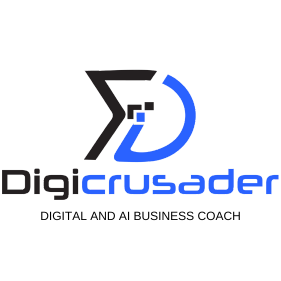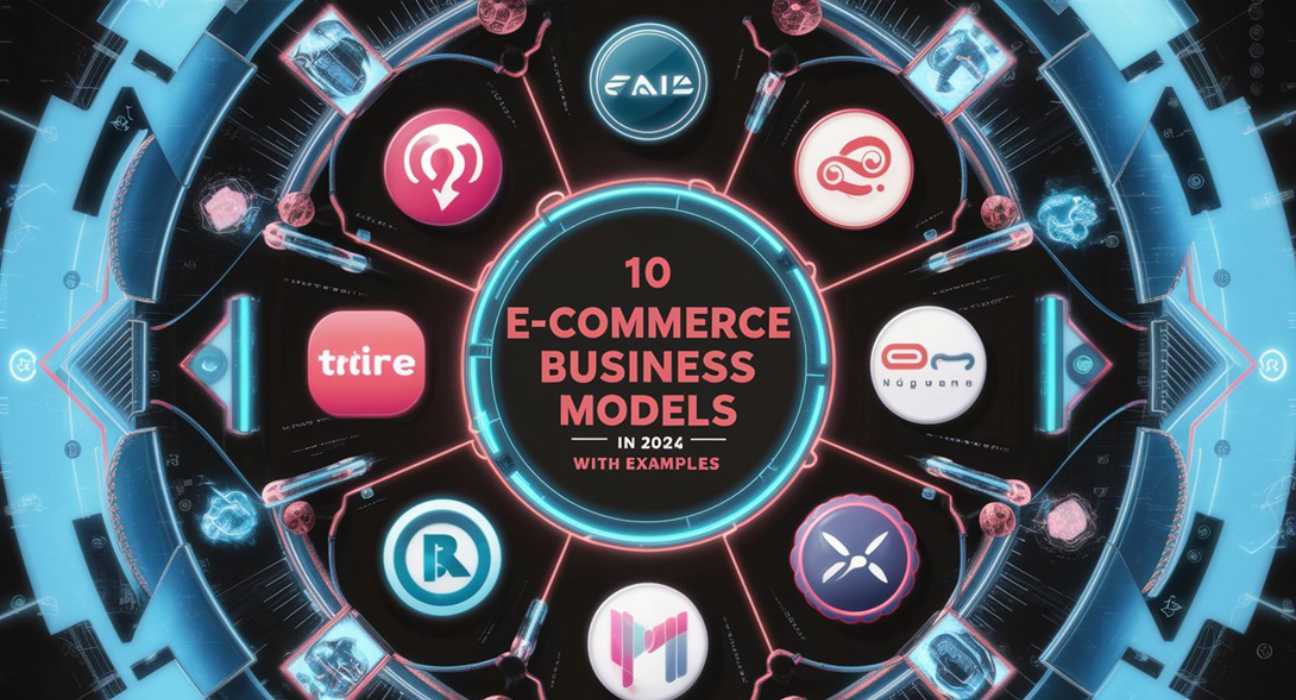It is quite an eventful two decades for e-commerce. Having started on a very low key, indeed, with just online marketplaces as some form of novelty, today we have entered an age where e-commerce is completely intertwined with our lives. Coupled with convenience of shopping online and technological advancement, changed consumer behaviour has resulted in blossoming several e-commerce business models. Of these, each has particular advantages, targeting different market segments.
Any person who wants to capture or dominate this online marketplace has to understand those models. In this article, we present ten e-commerce business models that are going to rule the industry in 2024. By having a closer look, you will understand which approach might be best fitted for your business ideas. Let’s get started!
Business-to-Consumer (B2C)
Definition and Characteristics: The most common e-commerce models are based on selling among businesses to consumers. It followed by the fact that a business sells its products or services directly to individual consumers. One of the many mainstays for B2C businesses is to provide an easier, wider shopping experience by giving great variety at competitive pricing and with efficient customer service. This is, therefore, a model that encapsulates everything from online retail stores to digital services offered to the end-user.
Example: Amazon, Amazon acts as the epitome of the B2C model. With Amazon being one of the largest online retailers in the world, it sells directly to consumers. From electronics to grocery items, the platform deals with individual buyers in need of convenience, variety, and competitive pricing. Amazon Prime fast shipment and exclusive content binds the customer experience and binds them even more loyally.
Business-to-Business (B2B)
Definition and Characteristics: In the Business-to-Business model, transactions take place between businesses. Under this model, businesses sell products or services to other businesses usually in bulk and at wholesale prices. In contrast, B2B transactions have longer sales cycles, greater quantity orders, and tougher negotiations compared with B2C. Here, long-term relationships have to be built up by offering quality attributes in one’s product and service.
Example: Alibaba, Alibaba is one of the world-leading companies in the B2B space. It connects manufacturers and wholesalers of various bulk products with businesses at very competitive prices. Working through this platform, it enables transactions in several industries, from electronics to apparel, between suppliers and businesses. In short, Alibaba has been able to provide a completely comprehensive marketplace that caters to the requirements of both buyers and suppliers.
Consumer-to-Consumer (C2C)
Definition and Characteristics: In the C2C business model, consumers or individuals sell products directly to other consumers. Online marketplaces facilitate these transactions by providing a listing and selling platform to the consumer. On the fringes, the C2C model targets mainly second-hand, handmade, or customizable goods. It creates a dynamic marketplace where consumers can easily buy and sell.
Example: eBay, eBay is one of the pioneers in the C2C business model. It simply allows end consumers to auction or sell items directly to other consumers. Be it vintage collectibles, used electronics, and even handcrafted things; everything is sold through this medium. This auction feature adds a bit of fun and can get sellers a higher price than what they would have otherwise received.
Consumer-to-Business (C2B)
Definition and Characteristics: If we consider the C2B model, then individuals sell products or services to businesses. This model gained its impetus simply because of the growing trend of freelancing, influencer marketing, and content creation. Hence, consumers can generate an income based on their skills or discussed ideas in the form of services and value communication to firms or businesses that have a demand for such services.
Example: Shutterstock, it’s a company where photographers, artists, and each content developer get an opportunity to sell their work. Conversely, extraction of licenses by businesses needing high-quality images, videos, and music is possible through vast libraries that Shutterstock keeps. In this model, the creators are able to monetize their works, while the businesses gain easy access to all forms of diverse media.
Subscription-based
Definition and Characteristics: The subscription-based business model is one in which customers are required to continue making periodic payments to prosecute a product or service. The nature of the model provides a business with steady streams of income while building customer loyalty by creating continuing value. These subscription-based services are fast becoming a trend across a wide array of business categories, with examples involving entertainment, software, and consumer goods.
Example: Netflix, it provides streaming services based on subscription. The subscribers are required to pay a monthly fee to access a library that offers huge volumes of movies, series, and original content. Netflix relies on continuously providing new content and maintaining subscribers’ interest for the renewal of subscriptions.
Dropshipping
Definition and Characteristics: Dropshipping is a zero-inventory business model for selling products. With every order placed by the customer, place an order with third-party suppliers and have it delivered directly to the customer. Since no inventory accounting or Management System is involved, upfront costs are reduced; hence, the model is very attractive for entrepreneurship.
Example: Oberlo, Oberlo makes it easy to conduct dropshipping with Shopify, guestimating the entrepreneurs to find products and sell them without managing inventory. One is at ease to window shop on this platform across a wide variety of products, thereby adding them to their online store with much ease and fulfilling the orders. Oberlo Works successfully because of their leeway on making dropshipping easier to use, which can allow everybody to start an online business.
White Labeling and Private Labeling
Definition and Characteristics: White labeling refers to the act of selling generic products branded by the company. Private labeling refers to selling exclusively branded products that are produced by some other enterprise. In any case, the companies that sell branded products are not required to manufacture those products in house. This way, businesses can establish a strong brand image and evoke brand loyalty.
Example: Brandless, Brandless sells quality, generic products under the brand; all of this makes for a simple, very cheap shopping experience. With the company focused on just the no-frills basics—foods, beauty, household goods Brandless is a way to bring value and transparency to customers. One of the main drivers of its success has been the ability to offer branded products at very low prices.
Wholesaling and Warehousing
Definition and Characteristics: Wholesaling and warehousing entail buying bulk commodities and selling them to consumers or retailers by storing them in a warehouse. This model entails heavy upfront investment in inventory and storage, but substantial profits can come through economies of scale. Companies involved in such a model commonly focus on efficiency, focusing on logistics to manage large volumes of goods.
Example: Costco, Costco runs a wholesale club model whereby it offers bulk products to clientele at discounted prices. At such highly discounted prices, Costco will attract very many bargain seekers that are acquired from bulk purchases and passed on to customers. The firm actually bases its success on its capabilities to efficiently manage inventories and offer value through bulk purchases.
Freemium
Definition and Characteristics: The freemium model offers basic services for free while charging a premium for added features. It’s normally appropriate in software and application industries where the core functionality is given for free, with upgrade options against payment. The freemium model attracts a large user base and converts a percentage of these users into paying customers.
Example: Spotify, Spotify offers both a free version with ads of their music-streaming service and ad-free premium subscriptions featuring offline listening and greater sound quality. This is what makes Spotify so very successful: the ability it has to provide a great free experience while giving users enough of a reason to upgrade to an enhanced experience.
On-Demand
Definition and Characteristics: An on-demand model is one whereby customers can instantly access products or services through digital platforms. This model serves a pivotal need for instant gratification and convenience, and it has turned out extremely popular in industries such as transportation, food delivery, and entertainment.
Example: Uber, Uber with its ride-hailing service, truly personifies the on-demand model. It matches riders’ needs for rides with drivers’ ability to offer those rides in real time. Using technology to accomplish that matching of supply and demand makes it an easy and very efficient service. Its success lies in quickly and reliably solving the need people have for transportation.
Conclusion – E-Commerce Business Models
Selecting the right e-commerce business model is a decision that will lay the foundation of success in the online marketplace. Basically, business models have benefits and problems alike; therefore, you have to choose one that works best with your business goals and resources. Whether you are operating a small online shop or a big company, an overview of these models will go a long way in helping you sail through the competitive landscape of e-commerce in 2024.
Sustain growth and long-term success in business by knowing emerging trends and altering the strategy with time as the industry continues to evolve. Look at those models and experiment with various approaches until you find one that suits your vision and capabilities. The future of e-commerce remains promising, and with the right model in use, one’s business can do very well in this dynamic landscape.
Tracking the changes in technology and consumer preferences will help create a business that shall not just meet consumer expectations but exceed them. The list goes on, from using data analytics to boost customer experience to practicing sustainability. Adopt the model you resonate most with in realizing your business vision and start constructing a solid online presence that’s built to last.
If you liked this article, check out this another read on key digital marketing metrics for Ecommerce business.

